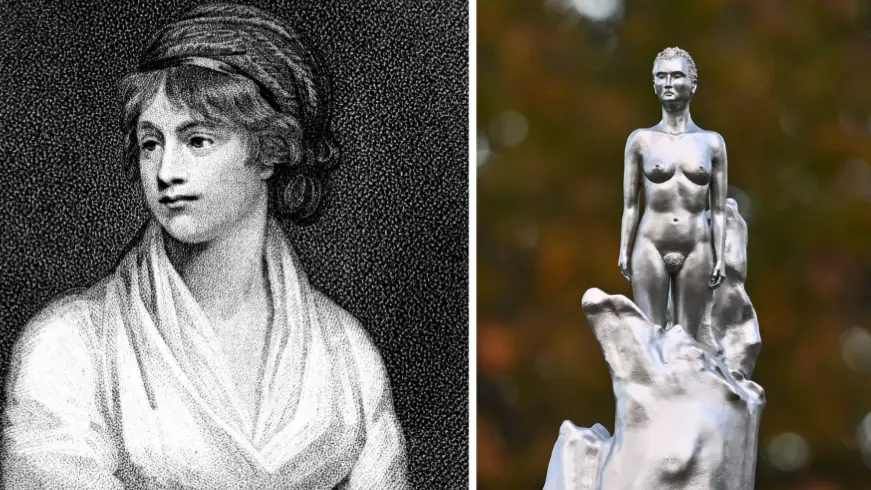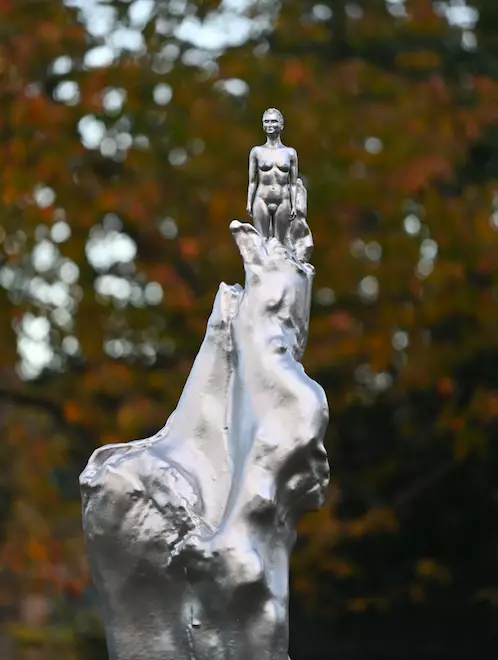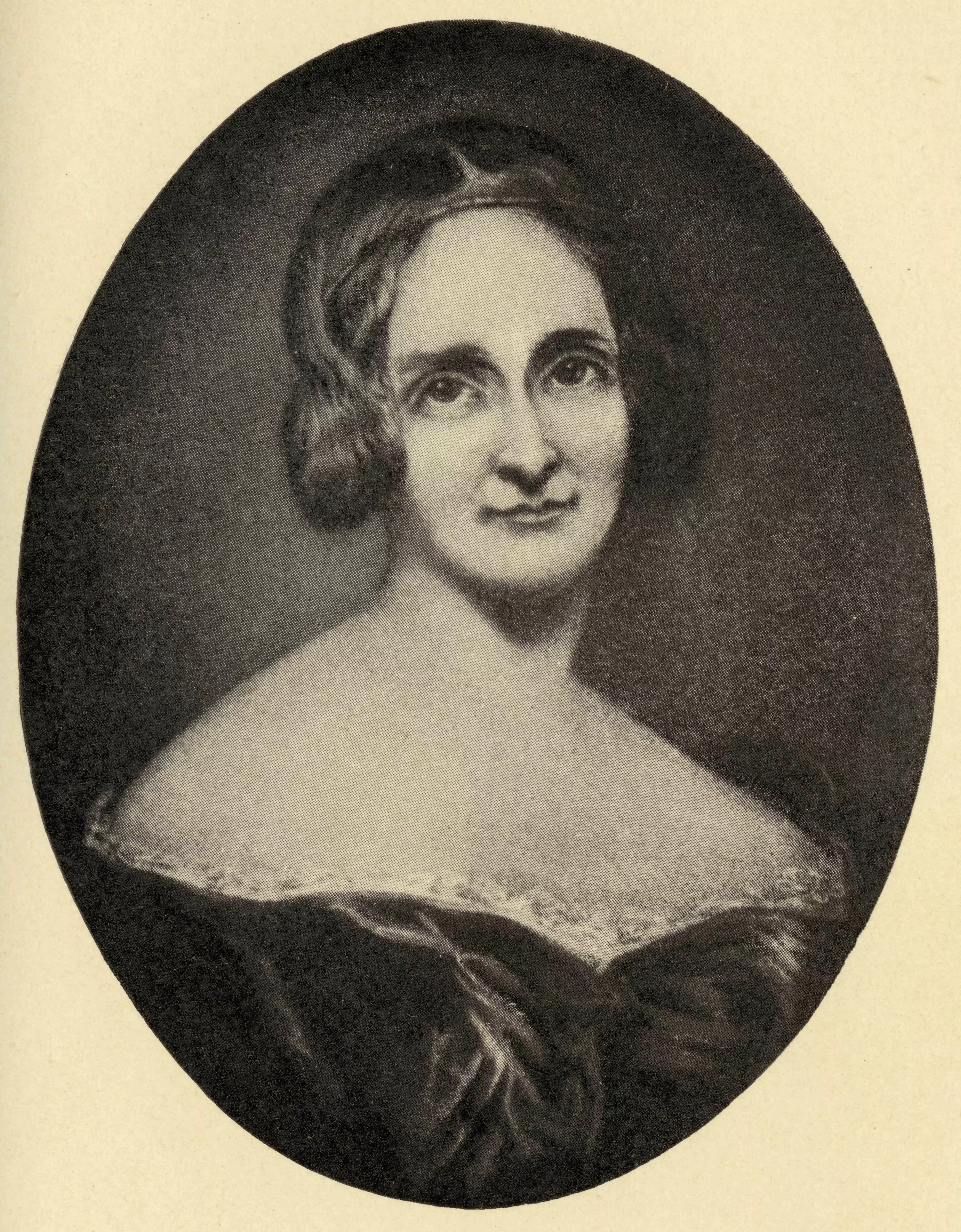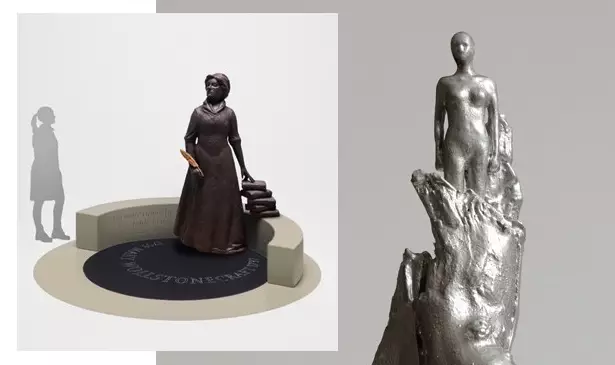
You know what they say, there's no better way to honour a famed feminist icon than to make a statue where she's inexplicably stripped completely naked.
In news which has certainly divided opinion, Islington, London now houses a sculpture made to honour famed historical figure, Mary Wollstonecraft, in which she's depicted as an 'everywoman' without any clothes on.
The silvered-bronze statue of the author, created by artist Maggi Hambling, was put up on Newington Green on Tuesday, prompting some to rejoice, while others voiced mixture of anger, confusion and offence.
Advert
In fact, one activist even went as far as to put a t-shirt on the £143,000 figure in protest, stating her nudity was completely unnecessary when honouring her legacy, as another branded the depiction nothing more than a "depressing... naked silver Barbie doll".

The sculpture is made up of a small figurine of a naked woman - which critics argue looks nothing like Wollstonecraft - stood on top of a larger silver mass.
This sits on a black base, which is engraved with Wollstonecraft's quote: "I do not wish women to have power over men, but over themselves."
Advert
In case you aren't familiar with her work, author Mary Wollstonecraft was born in Spitalfields, London, in 1759, and is famed for having campaigned for the rights of women.
In fact, she is regarded as "Britain's first feminist" by many, and much of her work - like novel Mary: A Fiction and Maria: or, The Wrongs of Woman - pitched feminist ideas which were seen as radical at the time.

Advert
Her most well known project is 1792's A Vindication Of The Rights Of Woman, where she highlighted that women were not given the same opportunity for education as men, and reasoned that they weren't innately inferior, but rather their ranking was the fault of society.
But she also wrote about the French Revolution from Paris, and it's there she met Captain Gilbert Imlay, with whom she welcomed daughter, Fanny, before discovering his infidelity, and attempting suicide.
After surviving this ordeal, Wollstonecraft met William Godwin, and they welcomed daughter Mary Shelley - who would go on to write Frankenstein.
And in a tragic twist of fate, it was then that she died, at the age of just 38, after contracting a fever during labour.
Explaining her work in a video posted by the campaign responsible for the statue on Tuesday, artist Maggi Hambling said it "involves this tower of intermingling female forms culminating in the figure of the woman at the top who is challenging, and ready to challenge, the world."
Advert
She added that the Wollstonecraft statue was meant to represent "an everywoman" who "emerges out of organic matter, almost like a birth."
However, many people just couldn't see it the same way she did.
For one, activist and author Caroline Criado Perez - who famously campaigned to get Jane Austen on the £10 note - said the naked sculpture was nothing more than "a colossal waste," branding it "so disappointing."
"This feels disrespectful to Wollstonecraft herself and isn't that the most important part?" she wrote on social media.
Advert
"In Wollstonecraft's own words: 'Taught from their infancy that beauty is woman's sceptre, the mind shapes itself to the body, and roaming round its gilt cage, only seeks to adorn its prison.' Just sad, really sad."
Novelist Jojo Moyes chimed in: "I think it would have been nice to commemorate Mary Wollstonecraft with her clothes on.
"You don't see a lot of statues commemorating male political figures without their pants on."
While journalist and author Caitlin Moran agreed: "If you want to make a naked statue that represents "every woman", in tribute to Wollstonecraft, make it eg: a naked statue of Wollstonecraft dying, at 38, in childbirth, as so many women did back then - ending her revolutionary work. THAT would make me think, and cry."
"Nameless, nude and conventionally attractive is the only way women have ever been acceptable in public sculpture," writer Imogen Hermes Gower concurred.
Also circulating online is a picture of a design which was almost chosen for the statue, depicting a clothed Wollstonecraft with a quill and books in her hands.

Responding to backlash, the statue's artist, Hambling attempted to laugh off critics, telling the Standard: "You can't be naked enough can you?
"The point is that she has to be naked because clothes define people. We all know that clothes are limiting and she is everywoman.
"As far as I know, she's more or less the shape we'd all like to be." SIGH!
Which prompted Anita Singh, the Daily Telegraph's arts and entertainment editor, to write: "Maggi Hambling's explanation for that Mary Wollstonecraft statue might actually be worse than the Mary Wollstonecraft statue."
Organised by the Newington Green Action Group, who founded The Mary on the Green campaign, the idea was to honour Mary in the park near where she lived and worked, and even founded a school before her death.
The campaign's website reads: "Over 90 per cent of London's monuments celebrate men. This is set against a population of 51 per cent women."
They found that out of 158 statues of women across the UK, almost half were fictional figures, and there were shockingly only 25 statues of historical females who weren't royals.
The project has been fundraising for years, and picked artist Hambling in 2018 after looking through an array of contenders.
Bee Rowlatt, chair of Mary on the Green, has also spoken out after the divisive statue was erected.
Addressing the fiery discussion that it had prompted on Twitter, she wrote: "Thanks to everyone who engaged thoughtfully with #VindicationForMary - & if you don't like this sculpture there are other campaigns for amazing women that deserve support ".
She then went on to tag a few similar fundraising projects seeking to immortalise important women.
Featured Image Credit: PA/Getty Images